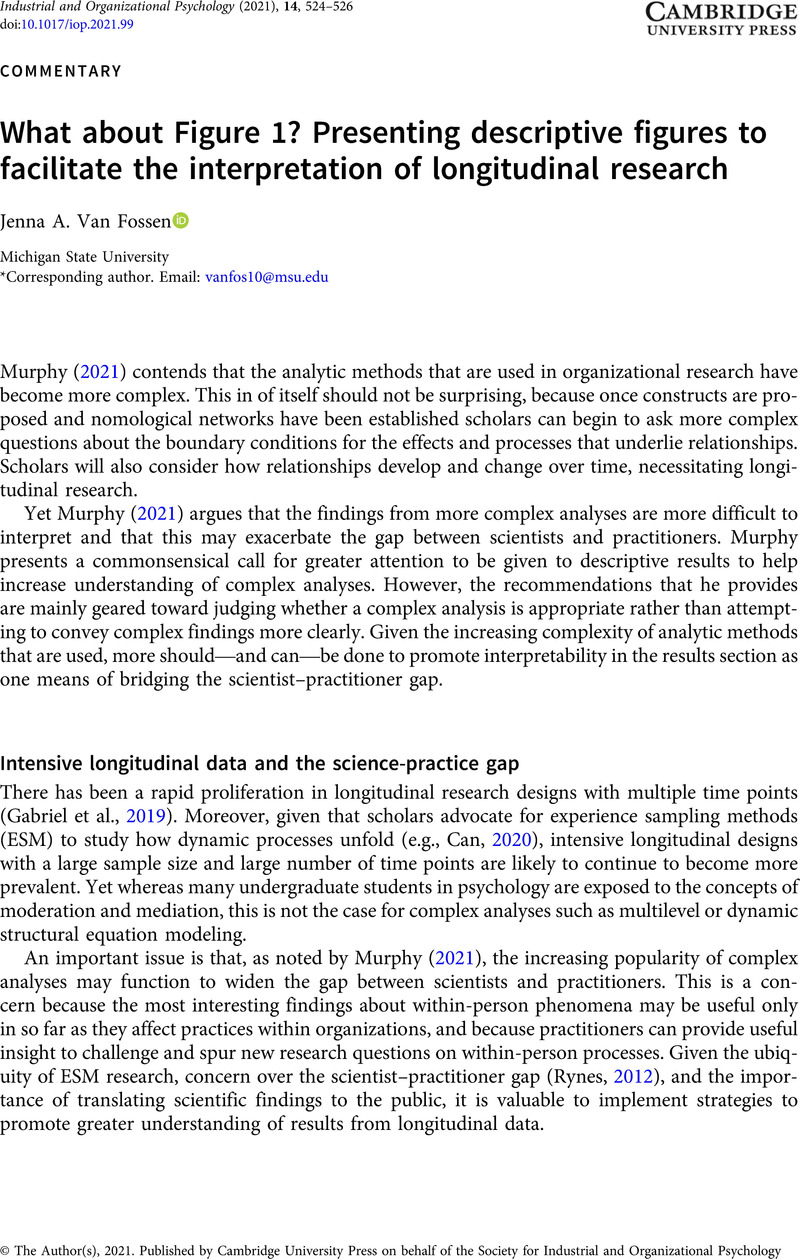Rynes, S. L. (
2012). The research–practice gap in industrial–organizational psychology and related fields: Challenges and potential solutions. In S. W. J. Kozlowski (Ed.),
Oxford handbook of organizational psychology (Vol. 1, pp. 409–452). Oxford University Press.
Google Scholar 